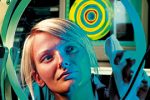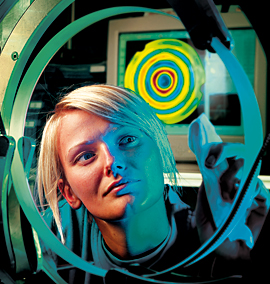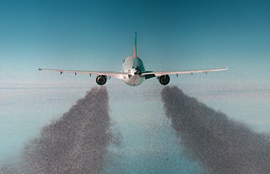Thanks to HALO, atmospheric researchers will be able to work in altitudes of up to 15.5 kilometers for the first time. They are looking to perform research on the chemical and physical processes that go on inside the troposphere, tropopause and stratosphere. Already today, the »Lidar«, one of the researchers’ most important measurement instruments for measuring wind, ozone and water vapor in the atmosphere, is being tested on the previous aircraft, a Dassault Falcon 20 E. To be able to use the Lidar, a laser window made from the extremely pure synthetic fused silica Lithosil® from SCHOTT LITHOTEC was built into the wall of the aircraft.
Measuring with laser pulses
Lidar stands for »light detection and ranging« and it resembles a radar system. However, instead of sending radio waves, it sends laser pulses into the atmosphere and analyzes the reflected scattering. The distance from the source of scattering is then calculated, based on how long the signals took to travel and the speed of light. Conditional parameters and the concentrations of trace gases can also be determined in this manner for various molecules. High purity optical glass is required to conduct reliable Lidar measurements and is needed to separate the lasers and detectors inside of the aircraft from the atmosphere outside.
The synthetic fused silica (SiO2) Lithosil® that SCHOTT LITHOTEC manufactures meets this demand. Due to how it is manufactured, it offers much higher purity than fused quartz won by smelting natural rock crystal. Lithosil® offers very high homogeneity and is free from bubbles and inclusions. By using thermal reshaping processes, it is possible to manufacture large format optics, such as the Lidar window discussed here that has a diameter of approximately half a meter.
The medical, measurement and especially environmental technology markets are considered to be the growth industries for synthetic fused silica. New Lidar technologies developed by the German Aerospace Center to measure wind, ozone and water vapor profiles, mainly in the area of aviation, are becoming popular in many new applications. For instance, Lidar systems are being used more frequently to detect turbulence and wind shears in the area of modern passenger aircraft. Today, Lidar systems also support monitoring the emissions of industrial chimney stalks, measuring of vehicle speed done by the traffic police and usage of laser distance measuring tools in the field of handcrafting, construction and surveying.




